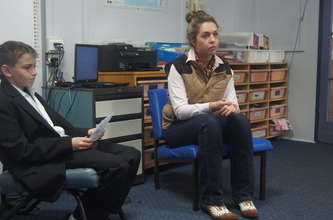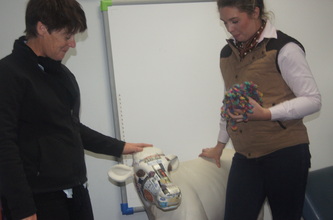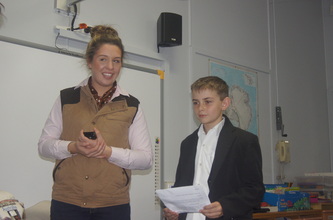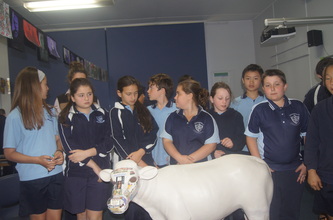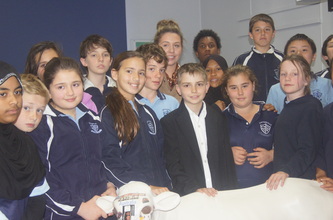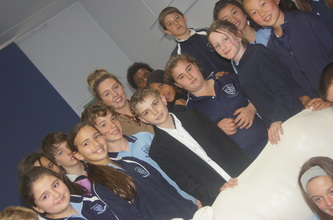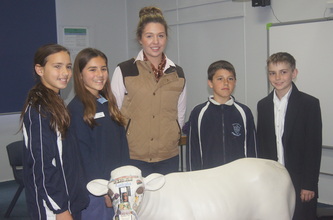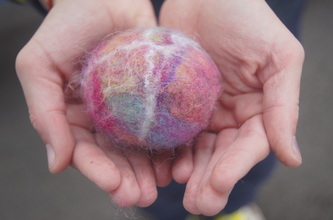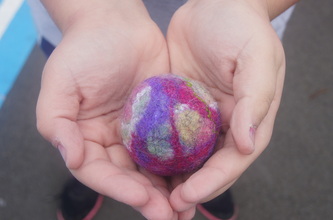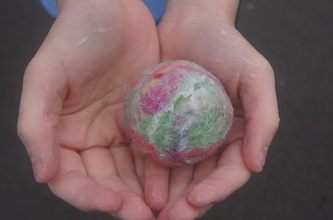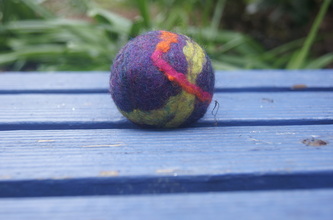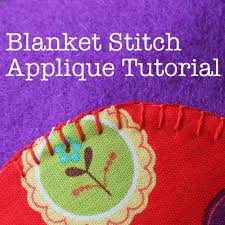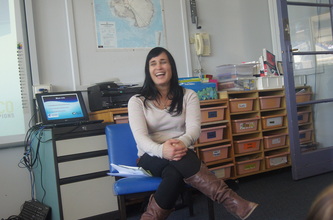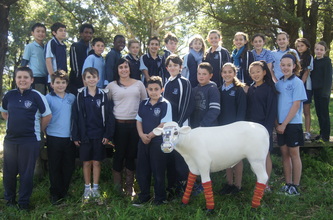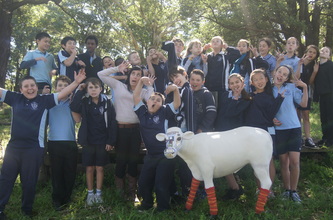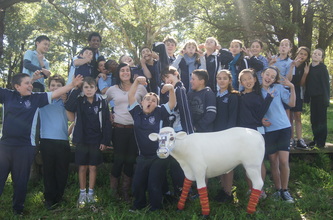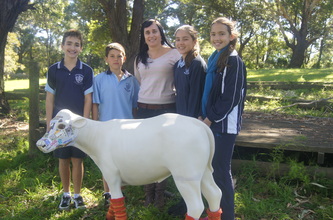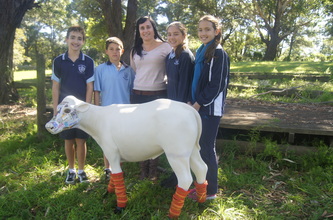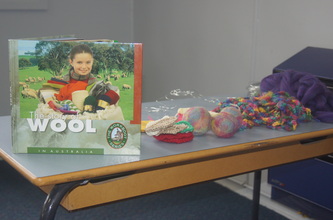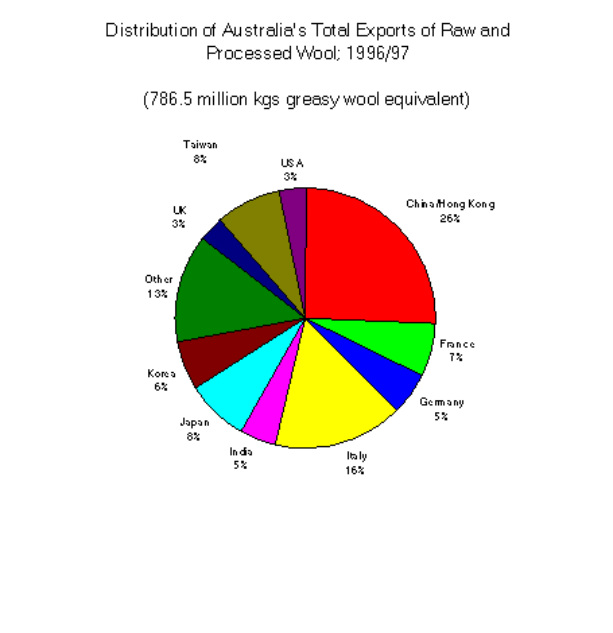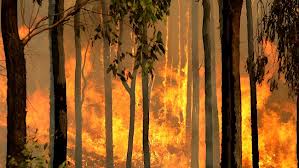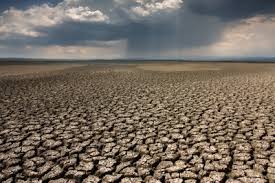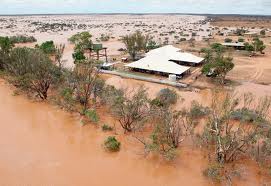On Friday 23rd August Sammi Townsend our Young Farming Champion visited our school for a short presentation. Sammi showed us a Power Point about her passions, Farming, Education, Family and Friends. The Power Point was very interesting and informative. We were able to see wool in different forms and gain a greater understanding of how important farmers are to our everyday lives. Some of us didn't realise that if we don't support Australian farmers than some of the products that we take for granted like,food crops,wool and cotton could one day not be available for us to use in clothing and to eat. Therefore we need to spread the word and support Australian Farmers and their products.
Below ia an interview that we conducted with Sammi where she answered some of our questions.
On Friday 9th August Simone one of our very clever parents came in to offer her felt making expertise. Year 6 had the privelege, of working with Simone and learning how to make "Wool Felt Balls" and "Flat Felt".
We would also like to acknowledge "The Illawarra Felt Makers incorporated" who supplied us with the wool for our project
How to make Felt Balls
Step One:
Grab a hand full of raw wool and shape it into a ball
Step Two:
Place the raw wool ball into a stocking, tie the end ( so no wool comes out) and cut the end.
Step Three:
Place the stockings into the washing machine and use a hot wash. Repeat this process.
Step Four:
Place the Wool Felt Balls out to dry.
Step Five:
Using dyed wool cover the raw wool evenly so that you have no gaps
Step Six:
Decorate your ball of wool using other coloured types of wool ( off cuts)
Step Seven:
Dip your ball into hot water ( making sure its not too hot!) and waiting until all the air bubbles have gone.
Step Eight:
Rub your wool ball with soap and lather until nice and foamy.
Step Nine:
Massage the soapy ball for about 20 mins continually dipping it in the water to keep it nice and wet.
Step Ten:
The ball should start to feel a little firmer. You then need to apply more pressure till it begins to feel like a tennis ball. If it is firm you may stop but if you wish it to be fluffy you can continue to rub the ball in between your hands until you are happy with the fluffiness of your ball.
The following slideshow demonstrates how to make flat felt.
Why do you think so much wastage occurs?Our society today is known as a "Throw - Away" society where many products are made cheaper in quality and labour. Products made from synthetic fibres are competing with our natural fibres wool and cotton. They are made cheaper and the quality is more often than not of a very high standard, because of this they don't last long and are often discarded. Think of five things that are made of wool ? What did you come up with? Below are some very interesting products that we found were made from wool.
PRODUCTS MADE FROM WOOL/ LANOLIN
Clothing and accessories such as scarves, beanies, gloves, hats, dresses, earmuffs,
shirts, suits and socks are some common pieces of clothing made from wool .
Other items that aren't often known to be made of wool include soft toys, fire fighters uniforms, tennis ball coverings, pillows, purses, printing inks, motor oils, used to fill mattresses, the inside of baseballs and cricket balls, felt tip pens, doonas, pool table baize, steering wheel covers, chalk board dusters, sleeping bags, piano key hammers, flags, insulation in houses, carpets, blankets, lining for stereo cabinets, felt hats, felt lining in soles of boots, tapestry, fabric to cover chairs, lipsticks, mascara, lotions, shampoos and hair conditioners, lanolin and filters to stop oil and dust. Industrial designer Daniel McLaughlin has made a sustainable suitcase made from discarded wool and bio-resin, providing business travellers with an eco-friendly luggage while offering hard-knocked farmers added value to their supply chain. HOW MUCH WOOL IS WASTED EACH YEAR ?
Wool that is shorn off a sheep is never wasted. All of the wool is sorted into different grades and bagged. The wool is bagged depending on the quality of the wool, to determine the quality they grade each bag in microns. The soft wool is used for clothing, the tougher wool is used for things like carpets and insulation. Wool is only wasted when it is discarded once we have finished with it or have no use for it anymore. Recycling is an option that we should consider . WHAT ARE THE ADVANTAGES OF REDUCING WASTE ?If we reduce the amount of waste that we have from woollen products we can: r *reduce the amount of landfill, which will help in protecting the environment. *lower the dependance on fossil fuels * Reduce environmental stress by REDUCE - REUSE - RECYCLE HOW CAN WE RECYCLE WOOL MORE EFFICIENTLY?
Here are some interesting ideas:
* Instead of throwing away your unwanted wool give it to charity
* Use an old beanie and turn it into a tea cosy
* You can use yarn to keep things together
* You can turn a woolen sock into a puppet
* You can turn random bits of fabric into a quilt
* With spare wool you can do felting, finger knitting, knitting and crochet*To learn how to recycle a woolen jumper click here-http://www.handspunartyarn.com/p/how-to-unravel-sweater-to-recycle-yarn.htmlWool has been used to make clothing for over a 1000 years. This must be considered when deciding what fabrics/yarns to use for clothing today and in the future. Wool is natural fibre that is long lasting, of a high quality and recyclable. So instead of just throwing it away like we are all guilty of doing take a minute to think "How can this be re-used ? " A common saying "someones trash is another persons treasure" is all too true .
On Thursday the 15th August we met Renee Riverier our local ECO Champion.Renee currently works for Conservation Volunteers Australia and came to our school to talk about what she does, how we can save the environment and resource management.
From a very young age we learn't that Renee had a passion for the environment. She went to a small school in Victoria of only about 30 children and enjoyed being outdoors whenever she could. Looking for frogs was one of her favourite outside activities.
On leaving school Renee had a variety of jobs from working in outdoor education,real estate, teaching english, working on the ski fields in Japan to her current position with Conversation Volunteers Australia.
An interesting fact that Renee mentioned was that she has weeded over 256 000km/Squared = 1000 Tennis Courts of weeds and she has planted over 1000 native plants.
We enjoyed listening to Renee's presentation, learning about her life and what she has achieved so far. Her story and the messages that she is spreading to young Australians is people to realise that helping the environment can make a difference and that "anyone can help the environment no matter how old or young you are its the simple things like composting, recycling and education that will help us to preserve our natural resources.
The presentation that we had from our Young ECO Champion Renee was very interesting. The information helped us to understand her role and what our part is in protecting the environment so that we can have it for a long time yet.
Why is it so important for Australia to produce wool for people
outside of the country ? What do you think would happen if
we only worried about ourselves?
The Importance of Wool Exports to Australia
Did you know that Australia is the world's leading producer and exporter of fine wool? Well, we didn't until we started doing our research! We also found out that sheep are not native to Australia. Therefore, to understand why we are such a leading force in the Wool Industry we need to first see how all of this came about. Australia produces approximately one quarter of the global wool production. This would not have been possible without the introduction of sheep in 1788 with The First Fleet. As you would have seen in the powepoint Wool has been had a major impact on our economy since the early 1800's.
Wool was first sent overseas in 1813. In 1820 Australia exported approximately 45,000 tonnes of wool to England. This was the beginning of our export trade.
Today Australian wool is sold worldwide but most of our wool is bought by China.
Australian wool is of a very high quality and can be used for clothing, furniture and textiles.
Australian wool is exported as a raw product because it is too expensive to process it in Australia. Therefore wool is exported to many different countries who then process the wool. Once processed it is then made into a vast range of products that we then buy back. The reason why we buy back from countries like China is because the processing / labour costs are much cheaper. Through the export trade of wool we continue to have positve relationships with our neighbours.
The prices paid for wool depend on a number of factors. The most important factors include the quality of the wool, how much wool is available and how many buyers their are.
Therefore it is important not just to our farmers but also, the whole of Australia to support the export of wool. Wool not only provides an income for people working on farms but also accountants, teachers, fashion designers, graphic designers, advertising executives university lecturers, accountants , bank managers, research and development to name a few.
What name shall we give " Archie" !
Here are some suggestions, that we have come up with so far.Can you think of any others?
Over We will be surveying the school and our local community to find out the most popular name for "Archie". Once we have counted the votes we will then report back to you with the Winner .
*Bo Peep *Ewenice
*Wulli *Curlie Cewe
*Ramses *Ewey
*Bo *Woolly Jumper
*Woolimina *Luvewes
*Lady Bah Bah * Baaaa Be
*Ewephoria *Rambo
*Baabra *Warmer
*Lewecy *Fluffy
*Woollma * Woolworths
*Wooly Bieber *Woolligong
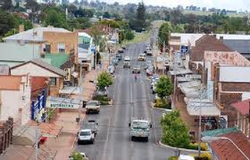
Regional centres and towns are important social and economic communities throughout Australia.
Whereas the capital cities are concentrated mainly along the Australian coast, rural towns have spread across the countries interior to service the outlying farms and farming communities.
Why are regional towns and centres so important to the farming community?
Regional towns and centres provide farmers with the opportunity to live in a community which provides basic services such as grocery stores, doctors, banks, petrol stations, clothing retailers and small businesses.
Farmers in most regional areas need to have access to basic things we find in all urban communities such as schools for their children, public pools and libraries.
Without regional towns, farmers would not be able to survive in these isolated areas in which they farm.
Regional towns also provide farmers with the opportunity to socialise with other members of their community and help each other deal with hardships. This is important in regional towns as they have an understanding about farming and all the factors influencing them, whether they are positive or negative.
All of what has been mentioned is often taken for granted and not given a second thought by families who live in the city. We have everything at our finger tips food,
textiles and other goods and services.
How will they be affected if changes to farming practices occur?
If changes occur to farming practices then
*The people in the towns will have to make changes to their lifestyle and employment.
*The people will have lower food production which will affect both their own food availability and their income from farming.
*It may cost people more money to transport food into town which they previously had produced themselves.
*Local shops will not be able to keep running, many would need to close down as people move closer to cities to earn a living.
*It can cost a lot of money to live in a small town as things like petrol are very expensive (up to $3/L in some rural towns)This will place more financial strain on struggling farmers and towns people.
*They will need to change their lifestyles and farming practices to use less water, to prepare products to meet export standards.
*If the shops and the services in the towns close down, the farming community will
not be able to survive. Likewise if the farmers are not able to farm the land and make a living, then the farms may close in which case there is no need for the regional townships anymore.
Therefore it is essential that farming communities and regional town centres work together to make sure they are supporting each and every aspect of the community as they are dependant on each other for survival.
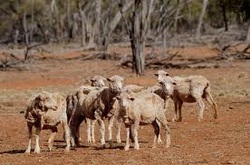 " Farming is an economically and culturally important part of life in Australia."There are many challenges that face our farmers each and every day, this was something that we didn't realise was happening and how difficult it was for the farmers to overcome until we started doing our research. Some the challenges faced by farmers include drought, floods, bush fires, salinity, soil erosion, soil acidity, diseases, introduced species ( plants and animals), economy, wool prices and a shortage of workers just to mention a few. Weather patterns are one particular challenge that farmers deal with each day. It can be unpredictable, extreme and ongoing. Recent conditions have been connected to climate change. With these extreme conditions occurring farmers have weeks/ months/ years with or without rain. This then causes food shortages, affects growth and development, the quality of the fleece, diseases, paddock growth, job opportunities and the economy. Since 1788 we have had many introduced species make Australia their home. Most of these have become a hinderance to farmers, killing their stock, destroying fences and competing for food. One animal in particular that is causing extensive damage to farmers flocks is that of the "wild dogs" . To highlight the damage that is being done Year 6 watched an episode of the 7.30 report that discussed the issue of "Wild Dogs" in Queensland and how they were killing lambs and ewes. This was quite disturbing and we hadn't actually realised how serious this problem was and the effect it was having on wool farmers. Queensland farmers are facing problems with wild dogs now this isn't confined to one state, other states are experiencing similar problems. The number of sheep in QLD alone has dropped from 20 million to 2 million. These statistics are frightening and suggests that in 10 years if we are lucky our sheep population could be almost extinct. Imagine that, this could have a disasterous effect on the wool industry. Farmers are seriously considering leaving the land as it is becoming too difficult. The stress with losing stock, as well as the financial burden. Some farmers have employed Wild dog hunters to trap and kill these wild dogs. For each skin they can get they paid up to $500 Other ways that farmers have begun to try and protect their ewes and lambs: * hanging dog trees * a fence that travels from QLD to Vic trying to stop the dogs getting in( But they are very cunning and still find ways to get in). * Traps * Baits * Alpacas in with the sheep Through awareness hopefully we will be able to work towards reducing the number of wild dogs and protect our lambs and sheep from being wiped out. The 7:30 video: http://www.abc.net.au/7.30/content/2013/s3836155.htm
|
